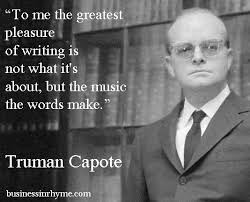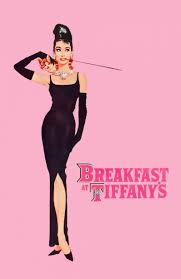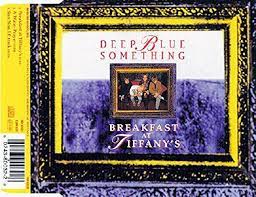CAPOTE: IN COLD BLOOD
CAPOTE: IN COLD BLOOD
Deep Blue, Something and Breakfast At Tiffany´s
with Audrey Hepburn
by Norman Warwick
Not being born until 1952 I was a little late to the party that celebrated, among other literary greats of the era, American writer Truman Capote, though by the mid seventies I had come to fully appreciate his writing styles.

Truman Streckfus Persons ( New Orleans , September 30 , 1924 – Los Angeles , August 25 , 1984 ), better known as Truman Capote , was an American novelist, screenwriter, playwright, and actor. Several of his short stories, novels, and plays have been praised as literary classics, including the novel Breakfast at Tiffany’s (1958) and the novel In Cold Blood (1966), which he called of “nonfiction novel”. His works have been adapted into more than 20 films and television series.
Capote was also a frequent personality at events, parties and television programs, which is why he enjoyed enormous popularity while alive. His coming-of-age stories often focus on upper-class New York (which he frequented frequently), and many of them are actually inspired by real people. In 2005, the film Capote was released and the following year Infamous , both inspired by the years of writing In Cold Blood . He passed away in 1984, due to intoxication due to drug use.

Not being born until 1952 I was a little late to the party that celebrated Audrey Hepburn’s career. It was only retrospectively that my crush on her developed. She has a wide, sparkling smile and slight, Givenchy-clad frame are woven into our cultural DNA to such a degree that it’s easy to reduce her to a select few aesthetic contributions rather than drawing out her stunningly instinctual work as an actress. 70 years on from the release of her genre-defining turn in Roman Holiday, it is worth unpacking Audrey Hepburn’s (right) best movies – her performances and her relationship to the craft, one born from a long-standing history with dance as a child, that was then refashioned into something complicated and personal.
Hepburn isn’t necessarily known for her naturalism or ability to wholly inhabit a role. Instead, there is a physical elegance that inhabits her performances, heightening her films and building an ideal of womanhood that would surpass her work in movies. So much of her career would be dedicated to recapturing the unassuming magic of Roman Holiday, to differing degrees of success. After this slew of technicolor romances, Hepburn would utilize the final act of her career to respond to her sickly sweet, early roles with cheekiness and honesty. More than almost any other figure of film history (barring perhaps Marilyn Monroe), she has been reduced to moments and images that don’t aptly summarize the breadth and width of her history within the industry.
The Paste list of the ten best Audrey Hepburn published by Paste is, always, informed, informative, argumentative and fun to read. The list looks to encompass her work in movies, transcending the iconic frame of a glamorous Hepburn, draped in pearls and peering out at early morning New York over her sunglasses.
You should check it out at www.pastemagazine.com
A film as beautiful as it is boring, Breakfast at Tiffany’s is a thinly drawn plot, barely holding together a series of stunning images that are brief and sparkling. The movie is remembered for everything it wasn’t, a sanitized (distinctly less gay) version of the source material, but Hepburn’s main character has earned its place in film history. In many ways Holly is the embodiment of Hepburn’s still opacity. They are both ethereal, just beyond reach and fun to watch. While the details of director Blake Edwards’ adaptation are fuzzy, the film will forever be beloved, if only for Henry Mancini’s unimpeachable score. Propelled forward by lilting woodwinds that reflect the loose and jazzy parties which define Holly’s life, the music of Breakfast at Tiffany’s is largely responsible for the hazy fondness which underlines people’s memory of this film. – Anna McKibbin
Having been born in 1952 I was forty three years old when Deep Blue Something had a hit with a song celebrating the movie, Breakfast At Tiffany´s. Once again I had not quite time it right to be incited to a party that was championing a film I had come to love only retrospectively.

Deep Blue Something lead singer Todd Pipes was inspired to write this song after seeing Audrey Hepburn in the film Roman Holiday, but he thought “Breakfast at Tiffany’s” would be a better title.
Breakfast at Tiffany’s is a 1961 movie based on a book by Truman Capote. It starred Audrey Hepburn as Holly Golightly, a high-priced escort looking for a rich man to marry. The movie made the song “Moon River” famous.
The song is a humorous and optimistic look at a failing relationship. One partner focuses on how different the two people are and how they aren’t going to last as a couple:
You say that we’ve got nothing in common
No common ground to start from
And we’re falling apart
The other partner, however, focuses on one small detail they have in common which is that they both like the movie Breakfast at Tiffany’s. The speaker clings to this one detail and repeats it five times as the chorus in the song:
And I said, “What about Breakfast at Tiffany’s”
She said, “I think I remember the film”
and as I recall, I think, we both kinda liked it
And I said, “Well, that’s one thing we got”
Deep Blue Something was formed by four college students from the University of North Texas. This was their only hit, and they did not release another album until Byzantium in 1998.
Todd Pipes recalled to Q magazine November 2008 that promoting this song got to be pretty tiresome. He explained: “As the song had Breakfast in the title, radio stations thought it would be genius to have us on at breakfast time. We’d be up till 3 a.m. and they’d wonder why we were pissed off playing at 6am.”
Truman Capote (1924 – 1984) was an American author, many of whose short stories, novels, plays and non-fiction are recognized literary classics. He was born in Louisiana and his early works, including The Glass Harp, are about the South. He then moved to New York, where he wrote scripts for plays and films plus further novels including his 1958 novella Breakfast at Tiffany’s. In the early 1960s, Capote’s career flagged until In Cold Blood (1965), his journalistic work about the murder of a Kansas farm family in their home, made Capote a celebrity.
Capote was 5 feet 3 inches tall and openly homosexual. Capote´s distinctive, high-pitched voice and odd vocal mannerisms were bought to life in Philip Seymour Hoffman’s Oscar-winning portrayal of him in the 2005 movie, Capote.
Apart from this song, Capote has several other connections to rock music.
In 1972 Capote was commissioned by Rolling Stone to cover the Rolling Stones’ tour of North America. And though he set out on the tour and began taking copious notes, he quickly fell out with Mick Jagger and refused to write the article. “Mick Jagger is about as sexy as a pissing toad,” he later cattily averred.
Capote posthumously appeared on the sleeve of The Smiths’ 1985 single, The Boy With The Thorn in His Side. English fashion and portrait photographer Cecil Beaton had taken the picture in 1949.
Capote was name-checked along with a number of other famous people in the Red Hot Chili Peppers’ 1991 track, “Mellowship Slinky In B Major.”
acknowledgements
The primary sources for this piece were written in Paste Magazine and Songfacts for the print and on line media. Authors and Titles have been attributed in our text wherever possible
Images employed have been taken from on line sites only where categorised as images free to use.
For a more comprehensive detail of our attribution policy see our for reference only post on 7th April 2023 entitled Aspirations And Attributions.




Leave a Reply
Want to join the discussion?Feel free to contribute!